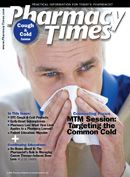Case Studies
Dr. Coleman is an assistant professor of pharmacy practice and director of the pharmacoeconomics and outcomes studies group at the University of Connecticut School of Pharmacy.

CASE ONE
Lost in (Glucose) Translation
VT is a pharmacy student on experiential rotation in a diabetes specialty clinic. While sitting in on a patient follow-up visit, the student overhears the endocrinologist tell a patient that her sugars are well-controlled, based upon the patient’s laboratory results depicting an estimated average glucose of <154 mg/dL. Later that day, the student meets with her rotation preceptor and asks, “What is an estimated average glucose? I thought we used hemoglobin A1C to monitor patient diabetes control.”
What should the preceptor tell the pharmacy student?
CASE ONE
ACE Inhibitors and ARBs in Stable Ischemic Heart Disease
EM, a 57-year-old Hispanic woman, comes for a follow-up visit at her primary care clinic. There she sees her primary care physician (PCP) and a consulting pharmacist. The PCP asks the pharmacist if EM could take any other medications that would improve her chances of a longer life. The pharmacist discerns that EM has a 10-year history of stable angina pectoris, has never had a myocardial infarction, and has a normal ejection fraction at 64%. Her chest pain is well-controlled on metoprolol 50 mg twice daily and amlodipine 10 mg once daily with nitroglycerin tablets for acute angina attacks. She receives aspirin 162.5 mg daily and pravastatin 40 mg daily (low-density lipoprotein cholesterol 72 mg/dL).
Given this information, should another therapy be added to EM’s medical regimen?
ANSWERS
CASE ONE:
The preceptor should explain to the student that the American Diabetes Association is recommending the use of new terminology when discussing glucose control with patients, called the estimated average glucose (eAG), a measure developed to allow health care providers to translate the results of hemoglobin A1C testing into units (mg/dL) that patients are accustomed to seeing during blood sugar self-monitoring. The relationship between eAG and hemoglobin A1C, validated during the A1C-Derived Average Glucose study, is characterized by the formula: eAG (in mg/dL) = (28.7 x A1C) — 46.7 (so that a goal A1C of <7% is equivalent to an eAG of <154 mg/dL).
CASE TWO:
Current evidence suggests that, in patients with stable ischemic heart disease and preserved left ventricular function already receiving standard medical therapy, the risk for death and nonfatal myocardial infarction can be further reduced by 13% and 17%, respectively, when angiotensin-converting enzyme (ACE) inhibitors are added. Furthermore, in one large evaluation, the OnTARGET trial (Ongoing Telmisartan Alone and in Combination with Ramipril Global Endpoint Trial), the combination of an ACE inhibitor and an angiotensin receptor blocker (ARB) was no better than an ACE inhibitor alone, and increased the risk of adverse effects. So EM would likely benefit from ACE inhibitor therapy, but not from combination therapy with an ACE inhibitor and an ARB.
<!--function showAnswer() {document.getElementById("answer").style.display = 'block';document.getElementById("link").style.display = 'none';}// -->

